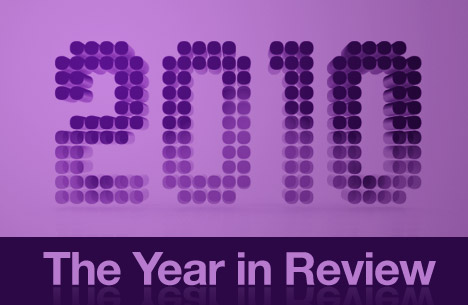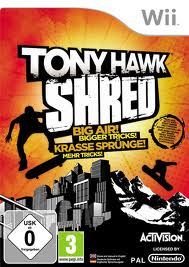 This post constitutes my “best of” for 2010, and by that I mean, those posts that I enjoyed writing the most, regardless of whether they were popular. It travels from my fight with FindLaw, through national attention due to a letter I published from Justice Scalia on secession, past an April Fool’s Day punking, and on through various court decisions, tort “reform” issues, ethical discussions and September 11. As I put this together, I realize it’s been one hell of a year with over 200,000 unique visits and almost 300,000 page views.
This post constitutes my “best of” for 2010, and by that I mean, those posts that I enjoyed writing the most, regardless of whether they were popular. It travels from my fight with FindLaw, through national attention due to a letter I published from Justice Scalia on secession, past an April Fool’s Day punking, and on through various court decisions, tort “reform” issues, ethical discussions and September 11. As I put this together, I realize it’s been one hell of a year with over 200,000 unique visits and almost 300,000 page views.
Some time later, I’ll drop a link into the sidebar so that, a couple of years from now, I’ll be able to find the stuff that I wrote and liked, as I did for 2009. Newcomers can also see a “best of” for 2006-2008 to see the types of things I covered earlier.
Without further ado:
Are FindLaw’s “Blogs” Tainting Its Clients, Commentators and the Profession of Law? (1/4/10)
J’accuse.
In looking at FindLaw’s new gaggle of so-called “blogs” that are little more than crappy search engine fodder and client solicitations, I struggled to find the right word to describe them. The ramifications of these crap-blogs are important, because FindLaw is now tainting their clients, diminishing the stature of their vaunted professor-commentators, and lowering the level of discourse in the legal profession as a whole. And because this is likely to be a source of discussion going forward, it also means these so-called “blogs” need an appropriate name…
FindLaw Uses Dead Child To Advertise Attorney Services (1/22/10):
Demonstrating that, perhaps, there is no sewer deep enough for it to descend into, FindLaw has used the death of a child to promote the services of the lawyers that pay them fees….
Scalia: “There Is No Right to Secede” (2/16/10)
The right of a state to secede from the nation is way outside my personal injury wheelhouse. But it has become a source of conversation on professorial and political blogs, and the concept has generated interest from the Tea Party movement.
As it happens, my brother has a letter from Justice Antonin Scalia that is directly on point as to the legitimacy of secession. How he got that letter, and its contents, are the subject of today’s post…
How the Supreme Court Could Hear the Secession Issue (A Response to Justice Scalia) (2/23/10):
In responding to my brother Dan’s letter regarding the legal plausibility of Maine seceding from the union to join Canada, Justice Antonin Scalia raised two points. First, he said that the Civil War settled the issue of the constitutional basis for secession. Second, he indicated that he didn’t see how such an issue could even reach this nation’s high court.
I’m here today to take issue with both points before turning this blog (hopefully) back toward the personal injury field that is my bailiwick…
John Stossel, You Gotta Love Him (2/3/10):
Now I know what you’re thinking with this headline: “John Stossel? You love the guy? He is always whining about trial lawyers, how can you love him?”
No, really, I do. Because for a writer, hypocrites like Stossel are like manna from heaven. This story is inspired by a little fluffinterview with New York Magazine earlier today where this question and answer appeared:
Q: Who is your mortal enemy?
A: Smug, ignorant, and arrogant Upper West Side Lefties and personal-injury lawyers…
Can Jury Consider All Damages, if Only Some Meet the No-Fault Threshold? (3/24/10):
Today’s case solves a quirk in New York’s No-Fault law regarding the “serious injury” threshold that must be met in order to bring a lawsuit. That threshold was established in the ’70s in order to cut back on the number of personal injury cases that resulted from car accidents.
So here’s the question: If the threshold is met under one category of injury, can other categories of injuries be considered by the jury?…
2nd Circuit Rejects Most of New York’s Attorney Advertising Rules (3/12/10):
The case concerning the constitutionality of New York’s attorney advertising rules was argued over a year ago. And Sonia Sotomayor was on the the panel. Now she has gone up and the decision has come down by the two remaining judges of the panel regarding the rules that went into effect on February 1, 2007.
And the 2nd Circuit has upheld the lower court decision in holding that most of the content-based rules violate the First Amendment. A separate section, regarding a 30-day anti-solicitation rule, was upheld both in the court below as well as in the 2nd Circuit….
New York Appellate Court Gives Lesson in Lousy Legalese (In an important case) – Updated (3/8/10):
It’s a contest! For the worst judicial writing in America. And I have here the first entrant.
Now I confess that I publish this with great trepidation, since I appear before this appellate court from time to time. And what I have to say isn’t kind.
But at the risk of pissing off some judges before whom I may appear, I have to ask, would you want our briefs to contain sentences with 300+ words? And would you want me to make you strain to figure out the points I’m making?…
About That White House Blogger Post from Yesterday….(NYT Gets Punked) (4/2/10):
Welcome to April 2nd. And that means a deconstruction of what happened on April Fool’s Day when I announced that I was going to become the official White House law blogger.
The basic idea was this: A bunch of law bloggers would try to punk the political bloggers, whose reputation is to grab any old rumor and run with it. Fact checking hasn’t always been the strong suit of this community.
But the political bloggers, to their collective credit, didn’t bite, despite wide dissemination of the story. Not on the right or the left. Instead it was the vaunted New York Times that ran with the story without bothering to check its facts. The Times, of course, had no sense of humor about it when the angry phone call came to me a couple of hours later…
Is an April Fool’s Joke an Ethical Violation? (4/5/10):
Just when I thought I’d put the April Fool’s fun behind me — and started to plot next year’s prank — comes this little nugget:
“April Fool’s Day Isn’t For Everybody: Once again, Ethics Alarms will declare that it is irresponsible for anyone not pictured on his or her blog wearing a clown nose to put out false facts “just for fun” … yes, even on April 1.”Who the heck is this blogger and why is he such a killjoy? And more importantly, does his argument have even a grain of merit?…
The SCOTUS Nominee and The Tissue Box Test (Revisited) (4/19/2010):
A year ago I wrote my thoughts on what I’d like to see in a Supreme Court justice to replace David Souter in The SCOTUS Nominee and The Tissue Box Test. This probably doesn’t come as a great surprise, but one year later, with Justice John Paul Stevens having now announced his retirement, those thoughts haven’t changed.
I was looking for someone who had fought uphill battles for people in need. Supreme Court short lists always seem to be filled with those from academia, BigLaw or former prosecutors. And traditionally missing were those who had stood in the well of the courtroom with people whose bodies or spirits were broken or severely compromised…
Attorney Fee Fight Gets Ugly in World Trade Center Litigation (Plaintiffs’ Legal Fees Being Slashed; Howe & Russell Objects) — Updated x3 (5/28/10)
A furious fight over legal fees that erupted from the World Trade Center Disaster Site Litigation returned to public view yesterday. That litigation had resulted in a complex settlement with a range of $575M to $657M for responders sickened in the aftermath of the September 11 attack. Judge Alvin Hellerstein rejected that agreement in March, however, for some 10,000 responders, claiming that the 33% legal fees that plaintiffs’ counsel was to receive was excessive.
In an angry letter yesterday to Judge Hellerstein, Paul Napoli of Worby, Groner, Edelman & Napoli, disclosed that the firm will voluntarily reduce its contracted legal fee from 33% to 25%, despite doing almost all of the heavy lifting on the plaintiffs side of the protracted and expensive litigation. In doing so, they asked why others were not also being asked to cut their fees…
Does the Tea Party Believe in Conservatism or Tort “Reform”? (8 Questions) (5/3/10):
As the Tea Party movement gains more attention, some folks want to know exactly what they believe in. Today’s question: Do they believe in a smaller, less intrusive, government or will they follow the Republican Party down the path of Big Government Tort “Reform”?
Since the Tea Party is a nascent and disorganized collection, I’m tossing out eight questions for those conservatives in the movement to ponder as they decide which side of the tort “reform” debate they are on…
Elena Kagan In Private Practice (And Her First Amendment Experience) (6/3/10):
I know, you’ve been sitting there on the edge of your seat waiting for this, ever since I discussed the serious lack of private practice work by Elena Kagan. Which wouldn’t be so bad except thatonly Justice Kennedy seems to have had any private practice experience. Basically, 98% of the legal time for Supreme Court justices has been in academia or public service.
So Kagan’s Senate Judiciary questionairre was released, and with drool running from my mouth I searched for all that I could on her private practice — much as I did with Sonia Sotomayor when I found her little private firm, Sotomayor & Associates that had no actual associates and subsequently became a minor issue.
And it turns out, while at the BigLaw firm of Williams & Connolly between 1989 and 1991, Kagan actually did some First Amendment work that was interesting…
Empire State Bldg Jumper Loses Suit Over “Emotional Distress” (6/17/20):
Do you remember Jeb Corliss? He’s the clown that tried toBASE jump off the Empire State Building in 2006, got busted by security, and then sued the building claiming emotional distress. I know, I know, that sounds even dumber than the claim of being fired for being too sexy, but it’s true, he actually did make such claims as I wrote about a year ago: Empire State Building v. Jeb Corliss…
Massive September 11 Case Settles (Again) — Additional $125M Added to Settlement (6/10/10)
The massive lawsuit regarding the September 11 World Trade Center attack and the 10,000 claimants has settled for the second time. The first settlement, in March of this year, was rejected by District Court Judge Alvin Hellerstein who demanded that the plaintiffs’ attorneys lower their legal fees from 33%. The new settlement has a minimum value of $625M with 95% participation by the claimants, and as much as $712.5M if other conditions are met. The original settlement was for $575M to $657M.
As I first reported on May 28th, the legal fees are being cut to 25%. In addition, the insurance company is ponying up an additional $50-55M, that matches the drop in legal fees. In addition, Workers’ Compensation liens will be waived, which also increases the amount of money that plaintiffs will receive…
Confidential Means Confidential, Even In Lindsay Lohan Case (Stuart Goldberg, Esq. — Fail) – Updated (7/15/10):
I really don’t get it sometimes. A client goes to a lawyer with a legal problem. The lawyer declines the case. And then the lawyer yaps to the press?!? Are you kidding me?…
Is Plaintiff’s Comparative Negligence a Bar to Summary Judgment Against Defendant? ) 8/15/10:
Query: Plaintiff brings suit alleging that Defendant was negligent in causing an accident. Court agrees Defendant was negligent, but says that Plaintiff may also be comparatively negligent to some degree. Should the court grant partial summary judgment in Plaintiff’s favor and leave the issue of Plaintiff’s own negligence for the jury?
I pose this question because last week a split opened among New York’s appellate divisions on the subject, thereby setting the issue up for a battle in the Court of Appeals…
Michael Jackson’s Mom Brings Wrongful Death Suit (Analysis) (9/16/10):
Fresh off the news ticker this morning is thatMichael Jackson’s mother Katherine Jackson has brought a wrongful death actionagainst concert promoter AEG. on behalf of Jackson’s three children. According to the article, the promoter was negligent in allowing Dr. Conrad Murray to care exclusively for Jackson.
The merits of that argument will rely, no doubt, on some contractual provisions between the promoter and Jackson dealing with his health. Those who give on the spot opinions as to whether the suit is good or not, without knowing what those contracts say, will likely be speaking in a vacuum….
New York Judge Holds 4 Year Old Can Be Sued in Bike Accident (10/29/10)
It’s all over the news right now: The story of a 4 year old child racing her bike with training wheels down a Manhattan sidewalk, who hits 87 year old Claire Menagh, who falls, breaks her hip, and dies three weeks later. The story was first reported in the New York Law Journal yesterday (sub required) and in today’s New York Times.
And the essence of the story is this: The mother who was watching her was sued, as was the child. And Justice Paul Wooten has ruled, while the suit is still in its beginning stage, that the case may proceed…
Is The Workers’ Compensation Lien Really Bulletproof? (10/14/10):
I hate dealing with liens when handling a case. In fact, everyone seems to hate them, except of course, the company that wants to reach its hand into a settlement and grab a little something for itself.
And the big reason lawyers hate dealing with liens is an inherent conflict of interest. An injured person hired you, yet you are forced to do the work of someone else trying to capitalize on your work. Almost all of the health care liens, however, were knocked out late last year when New York passed an anti-subrogation law, prohibiting health insurers from trying to scrounge part of the lawsuit proceeds.
In New York’s Workers’ Compensation world , however, — and stay with me here even though you think this might be a boring post — the lien under Workers Compensation Law section 29 is thought to be bulletproof. Which is to say, they get paid back some of the money they spent to the extent it exceeds certain limits.
But I’m not so sure that lien is bulletproof.
Tort “Reform” Money In A Nutshell (10/22/10):
This is a short tale of two news stories this week. And money. The first reports on “trial lawyer” lobbying, and is published in The National Law Journal. The paper reports that the American Association for Justice raised $2.5M thus far this year for its political action committee.
And the second comes from the New York Times, in which it reports that the US Chamber of Commerce can raise more than that from a single corporation:…
1,000 Posts (and 10 Points to Make on the Subject) (11/5/10):
This is the 1,000th post on this blog. Other than a dozen guest blogs, all the writing has been mine.
And there have been more than a few surprises, as I sifted through the metrics and links I’ve seen. So for one day only, I’ll navel-gaze at some of those things that I never would have expected when I went live almost four years ago (on November 18, 2006)…
Demand for Facebook Records Rejected by NY Appellate Court (11/17/10):
The defendant in this car accident case wanted an authorization for the plaintiff’s Facebook account. And a New York appellate court has shot down that demand, for now, in a ruling just released and published in today’s New York Law Journal…
Abraham Lincoln, Twitter, and This Blog (11/18/10):
Tomorrow is November 19th. Seven score and seven years ago, on that date, Abraham Lincoln dedicated the Gettysburg battle field with one of the great speeches in American history (reprinted below). And yet, it’s only 272 words. That’s something to think about when you hit page 20 of your next brief.
I also put Twitter in the post title. How can something so trite and easily abused be compared to the Gettysburg Address?…
How Much is a Breast Worth? (12/20/10):
The fact pattern is not complex: A 32-year-old single woman had a mastectomy. But she didn’t have cancer. The modified radical mastectomy was unnecessary….
 Today a Republican majority takes control of the House of Representatives. And their first order of business is to read the Constitution. And they want every new piece of legislation to set forth which part of the Constitution authorizes each bit of legislation.
Today a Republican majority takes control of the House of Representatives. And their first order of business is to read the Constitution. And they want every new piece of legislation to set forth which part of the Constitution authorizes each bit of legislation.


